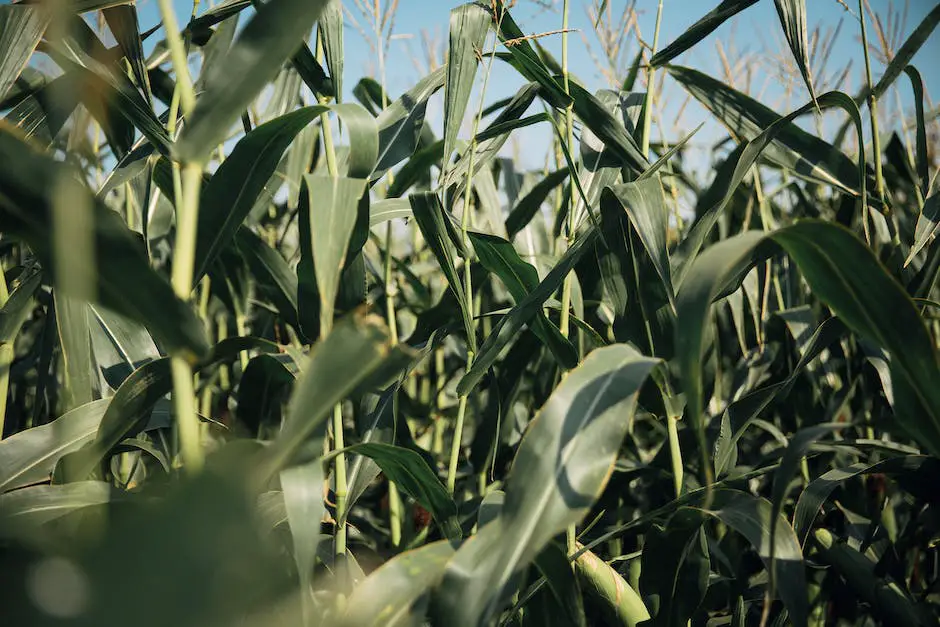Amidst the urgency of our depleting fossil fuel reserves and escalating environmental concerns, biofuels emerge as a sustainable solution, captivating the attention of governments, environmentalists, and scientists alike. Biofuels portfolio holds promises stretching across environmental, economic and geopolitical spheres. This discussion unveils an elaborate understanding of biofuels, their production, advantages over fossil fuels, and the present as well as future market panorama. Besides, the dialogue delves into the prominent crops employed for biofuel production, elucidating their respective benefits and restraints. Concurrently, the potential environmental repercussions related to the cultivation and harvest of these crops, as well as their economic feasibility, are addressed with a critical outlook.
Understanding Biofuels
Understanding Biofuels
Biofuels hold significant status in human pursuit for sustainable, renewable energy sources. In the simplest of terms, biofuels are energy sources derived from organic matter – from sources as varied as corn and sugar cane, to municipality solid waste.
These materials, undergoing certain biological and chemical processes, release energy that can be utilised as fuel. This biologically-derived fuel is aptly named biofuel. Bioethanol and biodiesel are perhaps the most recognised forms of biofuels, finding themselves fuelling cars on our roads and generators in our industries.
Biofuels and the Environment
One of the main reasons behind the push for biofuels is their potential for mitigating climate change. Unlike fossil fuels, biofuels are produced from crops that absorb carbon dioxide during their growth, effectively creating a carbon neutral cycle when the biofuels are burned. Furthermore, many biofuels also emit fewer pollutants such as sulphur dioxide and particulate matter, contributing to a cleaner atmosphere.
Impact on Economy and Geopolitics
Biofuels represent an energy source in which countries can be naturally self-sufficient, reducing reliance on fossil fuels from geopolitically unstable regions. This, inevitably, has potential economic benefits. Biofuels can provide an income stream to farmers and stimulate regional economies. Additionally, they can help buffer against fluctuations in global oil prices.
Billions of litres of biofuels are produced globally each year, with the United States and Brazil leading the pack in the international biofuel market. While opinion varies on the exact scale of future growth, it’s evident that the role of biofuels in our energy mix is poised to expand.
Crops for Biofuels
The type and choice of crop for biofuel impacts the environmental and economic balance of the biofuel itself. The ideal biofuel crop is fast-growing, hardy, and contains material that is easily converted into energy. Crops like sugarcane and corn, which contain high amounts of sugars and starches, are considered good options for bioethanol production, while vegetable oils or animal fats are generally used to produce biodiesel.
However, these crops come with their own criticisms, primarily their competition with food crops for land use. The rising demand for biofuels can inadvertently increase food prices and strain natural resources. Solutions like second-generation biofuels, derived from non-food based sources such as algae or perennial grasses, are being explored to address these challenges.
At its core, the effectiveness of biofuels is pinned on the intricate equilibrium amongst environmental gains, economic viability, and the sustainable procurement of input materials. When administered with care and consideration, biofuels have the potential to considerably contribute to our journey towards sustainable energy sources.

Photo by glenncarstenspeters on Unsplash
Types of Crops for Biofuels
Maize for Biofuel Production
Maize, also commonly known as corn, has gradually emerged as a primary candidate for biofuel production over recent years. Primarily used in the creation of ethanol, a predominant type of biofuel, maize boasts of a high output and rapid growth rate. Its substantial biomass yield on each acre of land makes it a preferred choice for biofuel production across numerous countries, notably in the United States.
Despite this, the extensive land use requirement for maize and the intensive farming methods employed provoke questions about its sustainability. The adverse environmental impact and the vast quantity of water required for the cultivation of maize prompt a significant enquiry – Can the utilisation of maize for biofuel production be justified?
Soybeans for Biofuel Production
Soybean-based biofuel, Biodiesel, has found its niche in the biofuel market, mainly used in diesel engines without any modifications. This legume crop, with its remarkable oil content, presents a compelling case for biofuel production.
Soybeans have a considerably lower yield and slower growth rate compared to corn, but it needs lesser land and water, signifying greater environmental sustainability. Nonetheless, it may not be the right fit for regions with a colder climate as it thrives in a warm environment.
Sugar Cane for Biofuel Production
Sugar cane, a tropical plant, is renowned for its role in producing Brazil’s iconic sugarcane ethanol. It presents high yield and fast growth rate, displaying enormous potential for biofuel production. The resultant bioethanol is considered to have a lower environmental impact compared to other crops, like corn.
The caveat of sugarcane, however, is its stringent requirement for specific growing conditions. It requires a tropical climate and copious water resources, limiting its growth to particular geographical regions only.
Palm Oil for Biofuel Production
Palm oil, extracted from the fruit of the oil palm tree, has emerged as an attractive feedstock for biodiesel production. High oil yield and a relatively fast growth rate are significant contributors to its growing popularity in the biofuel industry, particularly in Southeast Asia.
The dark side of palm oil production is the massive deforestation and biodiversity loss, often labelled as a major environmental concern. The long-term sustainability of palm oil as a biofuel crop, thus, precisely stands on the delicate fulcrum of ethical cultivation practices.
Algae for Biofuel Production
Algae, as a non-traditional biofuel crop, provides a promising alternative to the conventional ones. With a diverse range of species, algae offers a high oil yield, fast growth rate and minimal land use requirements. It also possesses the unique trait of absorbing CO2, thereby, reducing greenhouse gas emissions.
The challenges with algae, though, lie in the technological and economic aspects of large-scale production. Despite its potential benefits, the cost of cultivating and processing algae is currently higher than other feedstocks, which hampers its commercial viability.
There is a wide variety of factors to consider when selecting suitable biofuel crops, including their rates of growth, biomass output, and demands on the land. However, one must not overlook the economic viability and the environmental impacts of these crops in achieving a sustainable landscape for bioenergy. In the pursuit for eco-friendly energy solutions, carefully balancing these considerations is pivotal to paving the path towards a greener future.

Environmental Impact of Cultivating and Harvesting Biofuel Crops
Hidden Consequences
The cultivation of biofuels, one of the proposed resolutions to the growing energy crisis, heavily leans on the routine of monoculture or farming single crop over vast regions. Common examples include maize, wheat, and sugarcane, which are grown intensively for their biofuel potential. Ostensibly serving as a resolution to energy issues, this method in fact comes with a monumental environmental toll, concealed beneath the expanses of uniform crops that spread over the world’s agricultural lands.
Land Usage Stresses
Farmers cultivate crops for biofuels on land that could otherwise be valuable for food production or natural habitats. The surge in biofuels demand applies vigorous pressure on land availability and sets the stage for deforestation, an environmental problem of herculean capacities. Rainforests, sometimes ironically referred to as the lungs of the planet, are routinely cleared off, facilitating the cultivation of biofuel crops.
A Crescendo in Biodiversity Loss
Converting diverse ecosystems into monocultures affects biodiversity adversely, eliminating natural habitats for many species. These changes in land-use intensify the loss of biodiversity and threaten the survival of many animals and plants. Doubly so – because habitats are not only taken away but disrupted by incompatible agricultural activities.
Soil Degradation, an Insidious Enemy
Biofuel crop farming, over time, can lead to soil degradation. The increasing need for these crops often results in practices that exhaust nutrients from the soil, diminishing its fertility over time. Pesticides, routinely used in farm wide cultivation, might also contaminate the soil and water, leading to a toxic environment for non-target organisms.
Water Resource Mismanagement
Water usage in biofuel crop cultivation is another source of environmental concern. The extensive irrigation requirements of these crops may lead to a scarcity of this vital resource, particularly in regions prone to droughts and water stress. Water pollution, via the leach of fertilizers and pesticides into rivers and streams, poses tragic consequences for aquatic life and downstream ecosystems.
The Carbon Footprint Paradox
Biofuels earn hefty admiration for their potential to reduce greenhouse emissions. However, the cultivation and production process can paradoxically contribute to these very emissions. From the use of fossil fuels in tractors and other farm machinery to the release of carbon dioxide during the transformation of crops into fuel; the carbon footprint of biofuels might not be as trite as initially percieved.
Isn’t it paradoxical and somewhat disappointing? The very solution conceived to tackle our energy crisis appears to be a part of a larger, less tangible issue. The cultivation of biofuel crops and their ensuing environmental impact prompts us to question whether this is indeed the correct resolution to our energy predicament. The substantial trade-offs should encourage us to channel our endeavours towards sustainable farming techniques, efficacious water utilisation, and the diversification of our energy resources.

Economic Impact and Feasibility of Crops for Biofuels
A Closer Look at the Economics of Biofuel Crops
Biofuel, secured from biomass like plants or organic waste matter, provides a renewable alternative to traditional fossil fuels. The transition of agricultural landscapes into fields for biofuel crop cultivation carries substantial potential for economic reshaping and job creation potential. However, this change necessitates diligent evaluation of its economic viability, the potential effects it could have on food prices, as well as the potential societal and economic consequences.
The Economics of Biofuel Crop Production
Producing biofuel from crops is a process that involves several stages, each with associated costs. These stages include planting and nurturing the crop, harvesting it, transporting it to a processing facility, converting it to biofuel, and finally distributing the fuel to customers.
The economics of biofuel crop production largely depends on the type of crop. For example, corn and sugarcane are commonly used for biofuel production because they produce high amounts of ethanol. However, these crops are resource-intensive, requiring significant inputs of water and fertilisers, which can be detrimental to the environment and potentially costly. On the other hand, second-generation biofuels, such as those made from perennial grasses like switchgrass, require fewer inputs and have lower environmental impacts.
Job Creation Potential
The biofuel industry has the potential to generate jobs in agriculture, manufacturing and distribution. This can boost local economies, particularly in regions where agricultural livelihoods are prevalent. However, these jobs are dependent on demand for biofuels and technological advancements in biofuel production.
Impact on Food Prices
Biofuel production can also influence food prices. If farmers switch from growing food crops to growing biofuel crops, this can potentially lead to a reduction in the global food supply and increase food prices. Moreover, the competition for land between growing crops for biofuel and food production can further escalate food prices.
Socioeconomic Consequences
Transforming agricultural landscapes into biofuel crop fields can have significant socioeconomic consequences. On one hand, it can stimulate rural economies by providing employment opportunities. On the other hand, it can lead to land displacement, particularly if large amounts of land are purchased or leased by biofuel corporations in developing countries. This can result in loss of traditional livelihoods and social inequality, particularly among small-scale farmers and indigenous communities.
Governmental Policies and Subsidies
Government policies and subsidies play a crucial role in the biofuel sector. They can provide financial incentives for farmers to grow biofuel crops, making the industry more feasible. However, the extent of these policies and subsidies varies considerably across countries and regions. Furthermore, debates exist about the appropriateness of using public funds to support biofuels, particularly considering their potential environmental and social implications.
In conclusion, the production of crops for biofuels has a wide range of economic implications. It requires careful consideration of the potential benefits and drawbacks, including the potential for job creation, impacts on food prices, socioeconomic consequences, and the role of governmental policies and subsidies.
While embracing the myriad potentials of biofuels in terms of environmental sustainability and economic growth, it is equally indispensable to remain cognizant of the possible setback they harbor. The environmental repercussions linked to the cultivation and harvesting of biofuel crops and the economic periphery of crops for biofuel production cannot be overlooked. Crucially, the comprehensive landscape of governmental policies and respective subsidies pertaining to biofuels are vital in governing the future trajectory of this sector. Thus, the journey towards a more sustainable energy future through the lens of biofuels requires an earnest grasp of the composite scenarios tied to its progress.




